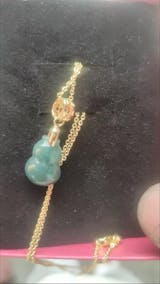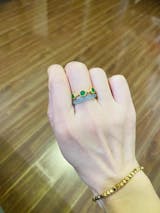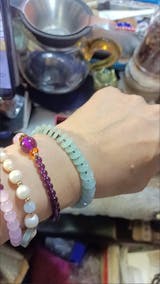Why Tibetan People Love Adorning Themselves with Jewelry
"How can these clothes be so beautiful?" is a common exclamation when people see the attire worn by Tibetan people during their gatherings.
During festivals on the Qinghai-Tibet Plateau, it's common to see Tibetans of all ages adorned with various beautiful pieces of jewelry, giving them a luxurious appearance. But why do they wear such heavy adornments that can weigh several kilograms?

Upon visiting the Tibetan Clothing Exhibition Hall at the Chinese Museum of Tibetan Medicine and Culture, one can see the diverse attire from different regions: the robust and bold men's clothing, the elegant and graceful women's clothing, the vibrant color combinations, and the numerous jewelry pieces made of precious stones and metals. Understanding Tibetan customs might provide an answer to this intriguing question.
Historically, Tibetans were primarily nomadic, without fixed residences, often moving in response to changes in nature. Every relocation required carrying a large amount of goods and wealth. Eventually, they discovered the value-retaining and appreciating qualities of gemstones like amber. During migrations, they converted immovable assets into valuable, portable gemstones for convenience.

In Tibet, bone, pure silver, Tibetan silver, agate, turquoise, amber, coral, and shells are the main materials used in traditional jewelry. These materials, derived from nature, are often imbued with auspicious meanings and are closely linked with Tibetan Buddhism.
Tibetan Silver
Tibetan silver is an alloy containing silver, produced in Tibet. Its main components include pure silver, nickel, and copper. Traditional Tibetan silver resembles pure silver in texture but is slightly less bright, giving the jewelry an antique appearance, which reflects the region's ethnic characteristics.

Agate
Agate is transparent, colorful, luxurious, and intricately shaped, often resembling clusters of grapes or pearls. It has significant ornamental and collectible value. Agate from the Himalayas is solid and delicate, with bright, full colors and natural patterns, making each piece unique.

Almost all Tibetan jewelry might contain turquoise. Tibetans believe turquoise embodies the spirit of gods, symbolizing majesty and auspiciousness. It is often used to decorate statues of deities, as it is thought to protect and bring good fortune.
An ancient legend describes the relationship between turquoise and the soul: by divine will, the subjects of the Tibetan king are forbidden from throwing any piece of turquoise into the river, as doing so might cause the soul to depart from the body, resulting in death.

Shop turquoise bangles here.
Amber
As the saying goes, "Amber of a thousand years, beeswax of ten thousand years," amber is fossilized tree resin formed millions of years ago. It has been cherished by Tibetans for its auspicious and sacred nature. Differing from amber in appearance due to the resin from various coniferous trees, beeswax is highly valued by Tibetans. It is not only used for adornments like bracelets, necklaces, and headpieces but also revered for its mystical powers and spirituality.

Coral and Shells
Though not native to Tibet, many of the jewelry pieces worn by Tibetan women are made from marine organisms like coral and shells. Historical Tibetan texts describe the Himalayas as a former marine region. Tibetans have a unique affection for red coral, viewing it as an auspicious offering to the Buddha and often using it to make prayer beads or decorate statues. In the West, coral is considered a protective stone for sailors, believed to calm storms and provide protection, hence its high regard.

Tibetans' love for colorful clothing and sparkling jewelry is perhaps a pursuit of beauty. Most importantly, their devotion to Buddhism enhances the appeal of these adornments. Amber, agate, and other gemstones are among the seven treasures of Buddhism, which adds to their allure for Tibetan people.
To sum up, the tradition of adorning themselves with beautiful and often heavy jewelry is deeply rooted in Tibetan culture and history. It reflects their nomadic heritage, religious beliefs, and appreciation for natural beauty, making it an integral part of their identity and way of life.
Related Articles:
Where is Tibet and Why is Tibet the Sacred Land in Our Hearts?



























































